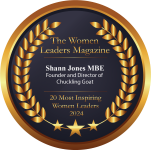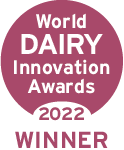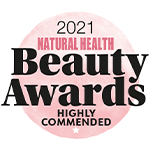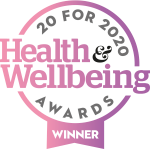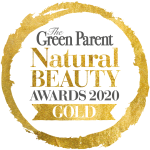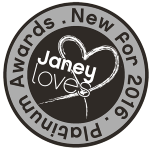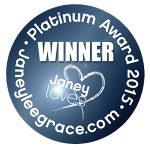Escherichia-Shigella
Escherichia-Shigella is a group of bacteria within the Enterobacteriaceae family that includes species such as Escherichia coli (E. coli) and various Shigella species, which can significantly impact human health and cause disease. Here is an overview of how Escherichia-Shigella interacts with human health:
- Antibiotic resistance: Both E. coli and Shigella species can develop antibiotic resistance, complicating the treatment of infections. Some strains produce extended-spectrum beta-lactamases (ESBLs) or other resistance mechanisms, requiring alternative treatments.1Poirel L, Madec JY, Lupo A, Schink AK, Kieffer N, Nordmann P, Schwarz S. Antimicrobial Resistance in Escherichia coli. Microbiol Spectr. 2018 Jul;6(4). doi: 10.1128/microbiolspec.ARBA-0026-2017.2Wang S, Zhao S, Zhou Y, Jin S, Ye T, Pan X. Antibiotic resistance spectrum of E. colistrains from different samples and age-grouped patients: a 10-year retrospective study. BMJ Open. 2023 Apr 12;13(4):e067490. doi: 10.1136/bmjopen-2022-067490.
- Commensal and pathogenic E. coli: Some E. coli strains can cause infections, such as urinary tract infections, diarrhoea, and food-borne illnesses. Emerging science has identified some E. coli strains might behave like commensal bacteria that naturally inhabit the human gut, coexisting with other microbes without causing illness as a negligible percentage of the total gut bacteria. This is the reason why the ranges for Escherichia-Shigella in the Chuckling Goat test allow for a very small amount of this microbe to be present in samples.3Ramos S, Silva V, Dapkevicius MLE, Caniça M, Tejedor-Junco MT, Igrejas G, Poeta P. Escherichia coli as Commensal and Pathogenic Bacteria Among Food-Producing Animals: Health Implications of Extended Spectrum β-lactamase (ESBL) Production. Animals (Basel). 2020 Nov 29;10(12):2239. doi: 10.3390/ani10122239.4Proença JT, Barral DC, Gordo I. Commensal-to-pathogen transition: One-single transposon insertion results in two pathoadaptive traits in Escherichia coli -macrophage interaction. Sci Rep. 2017 Jul 3;7(1):4504. doi: 10.1038/s41598-017-04081-1.5Sarowska J, Futoma-Koloch B, Jama-Kmiecik A, Frej-Madrzak M, Ksiazczyk M, Bugla-Ploskonska G, Choroszy-Krol I. Virulence factors, prevalence and potential transmission of extraintestinal pathogenic Escherichia coli isolated from different sources: recent reports. Gut Pathog. 2019 Feb 21;11:10. doi: 10.1186/s13099-019-0290-0.
- Shigella infections: Shigella species, including S. dysenteriae, S. flexneri, S. boydii, and S. sonnei, cause shigellosis, a form of dysentery characterised by severe diarrhoea, abdominal pain, and fever. Shigellosis is primarily transmitted through contaminated food, water, or person-to-person contact.6Hale TL, Keusch GT. Shigella. In: Baron S, editor. Medical Microbiology. 4th edition. Galveston (TX): University of Texas Medical Branch at Galveston; 1996. Chapter 22. Available from: https://www.ncbi.nlm.nih.gov/books/NBK8038/7Sansonetti PJ. Shigellosis: an old disease in new clothes? PLoS Med. 2006 Sep;3(9):e354. doi: 10.1371/journal.pmed.0030354.
- Preventing infections: Reducing the risk of Escherichia-Shigella infections involves good hygiene practices, proper food handling, and sanitation. In healthcare settings, handwashing and adherence to infection control measures are essential to prevent the spread of antibiotic-resistant strains. Efforts to develop vaccines and therapies targeting specific E. coli and Shigella species are ongoing, aiming to reduce the incidence of infections and improve treatment options.8Aslam A, Okafor CN. Shigella. [Updated 2022 Aug 8]. In: StatPearls [Internet]. Treasure Island (FL): StatPearls Publishing; 2023 Jan-. Available from: https://www.ncbi.nlm.nih.gov/books/NBK482337/
In summary, Escherichia-Shigella bacteria play diverse roles in human health, with some E. coli strains causing infections, along with various Shigella species, and some acting as commensals coexisting without causing illness as a negligible percentage of the total gut bacteria. Understanding and addressing the risks associated with the presence of Escherichia-Shigella species in your microbiome sample is vital for protecting the delicate balance of your gut microbial ecosystem.
Where to find Escherichia-Shigella in the Chuckling Goat Gut Microbiome Test
You will find your Escherichia-Shigella scores in the “Pathogens” report in your Chuckling Goat Gut Microbiome Test results. Guidance on how to work with pathogens like Escherichia-Shigella will be featured in your Personal Action Plan. Please note that this information is not intended to be a substitute for professional medical advice, diagnosis, or treatment. Always seek the advice of your GP or other qualified health provider if you have any questions about Escherichia-Shigella.
Synonyms: E. coli, Escherichia species, Shigella species, E. coli infection, Shigella infection, S. dysenteriae, S. flexneri, S. boydii, S. sonnei
Important disclaimer
The Chuckling Goat Gut Microbiome Handbook is an educational resource built to translate complex science into plain English. The information provided on this page is not intended to be a substitute for professional medical advice, diagnosis, or treatment. Always seek the advice of your GP or other qualified health provider with any questions you may have regarding a medical condition. Always check with your GP for interactions with medications/health conditions before changing your diet or starting to take food supplements.
References
- 1Poirel L, Madec JY, Lupo A, Schink AK, Kieffer N, Nordmann P, Schwarz S. Antimicrobial Resistance in Escherichia coli. Microbiol Spectr. 2018 Jul;6(4). doi: 10.1128/microbiolspec.ARBA-0026-2017.
- 2Wang S, Zhao S, Zhou Y, Jin S, Ye T, Pan X. Antibiotic resistance spectrum of E. colistrains from different samples and age-grouped patients: a 10-year retrospective study. BMJ Open. 2023 Apr 12;13(4):e067490. doi: 10.1136/bmjopen-2022-067490.
- 3Ramos S, Silva V, Dapkevicius MLE, Caniça M, Tejedor-Junco MT, Igrejas G, Poeta P. Escherichia coli as Commensal and Pathogenic Bacteria Among Food-Producing Animals: Health Implications of Extended Spectrum β-lactamase (ESBL) Production. Animals (Basel). 2020 Nov 29;10(12):2239. doi: 10.3390/ani10122239.
- 4Proença JT, Barral DC, Gordo I. Commensal-to-pathogen transition: One-single transposon insertion results in two pathoadaptive traits in Escherichia coli -macrophage interaction. Sci Rep. 2017 Jul 3;7(1):4504. doi: 10.1038/s41598-017-04081-1.
- 5Sarowska J, Futoma-Koloch B, Jama-Kmiecik A, Frej-Madrzak M, Ksiazczyk M, Bugla-Ploskonska G, Choroszy-Krol I. Virulence factors, prevalence and potential transmission of extraintestinal pathogenic Escherichia coli isolated from different sources: recent reports. Gut Pathog. 2019 Feb 21;11:10. doi: 10.1186/s13099-019-0290-0.
- 6Hale TL, Keusch GT. Shigella. In: Baron S, editor. Medical Microbiology. 4th edition. Galveston (TX): University of Texas Medical Branch at Galveston; 1996. Chapter 22. Available from: https://www.ncbi.nlm.nih.gov/books/NBK8038/
- 7Sansonetti PJ. Shigellosis: an old disease in new clothes? PLoS Med. 2006 Sep;3(9):e354. doi: 10.1371/journal.pmed.0030354.
- 8Aslam A, Okafor CN. Shigella. [Updated 2022 Aug 8]. In: StatPearls [Internet]. Treasure Island (FL): StatPearls Publishing; 2023 Jan-. Available from: https://www.ncbi.nlm.nih.gov/books/NBK482337/



